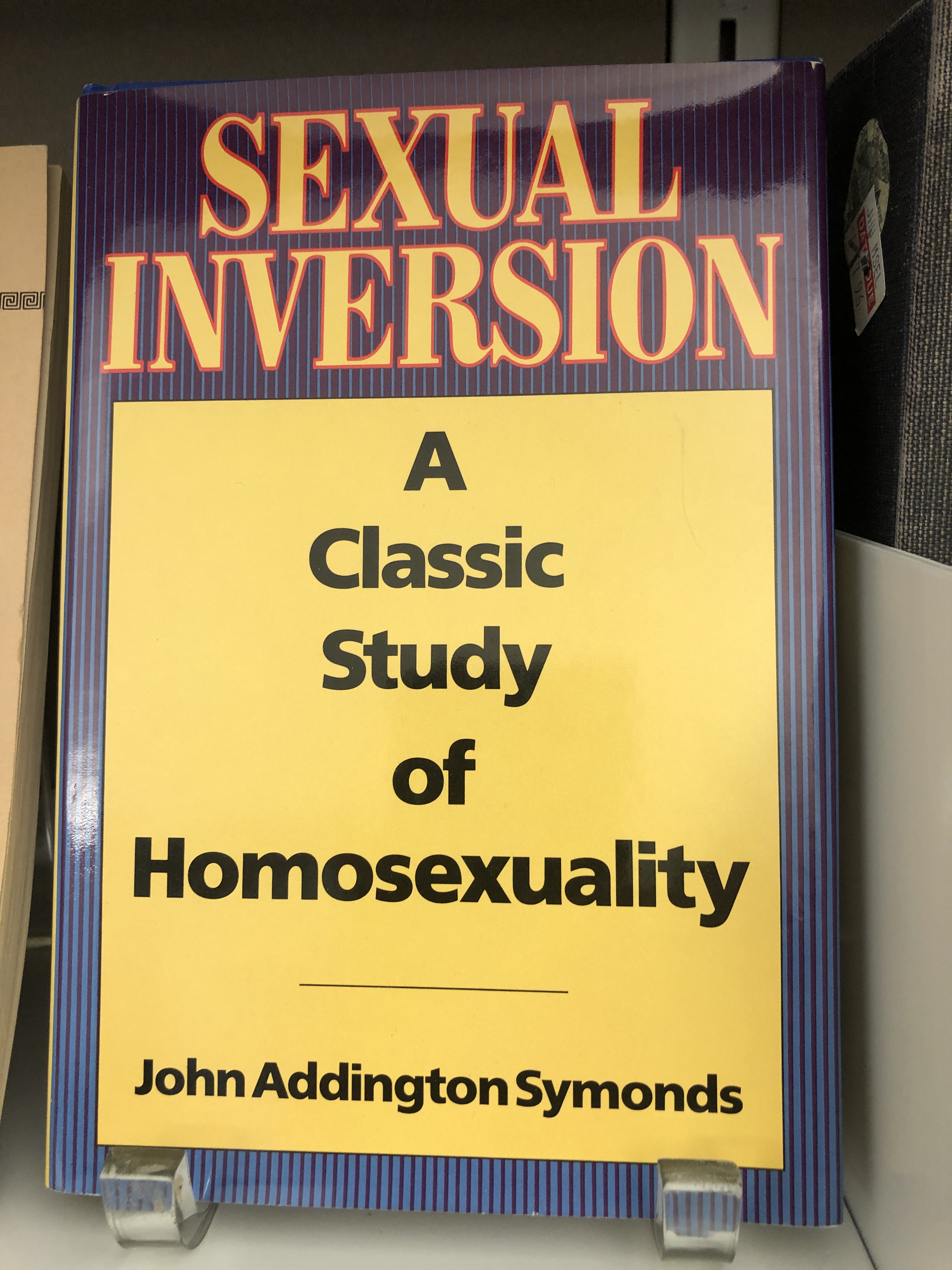“Sexual Inversion” is a book written by John Addington Symonds and Havelock Ellis that was published in 1897. While published posthumously, it still remains one of Symonds’ most influential works and encompasses many of his thoughts pertaining to the ancient world as well as conceptions of homosexuality throughout history. “Sexual Inversion” is the first scientific study written in English on the subject of homosexuality, or “sexual inversion” as it was called before the origin and widespread use of the word “homosexuality”. The book is the product of four years of research across a variety of fields, such as anthropology and psychiatry. The result is a series of case studies of homosexual men and women that portray homosexuality (or sexual inversion) as a natural phenomenon and not something that should be considered morally wrong or shameful.[1] The book also includes Symonds’ shorter text “A Problem in Greek Ethics”, which has been one of our most important texts for the Lab throughout the semester.

This book truly epitomizes much of what John Addington Symonds believed about the history of homosexuality as well as its origins in the Classical world. The text begins with a scientific discussion about animals and their sexual practices. After this, using a series of 33 case studies of homosexual individuals, Symonds and Ellis discuss the nature and theory of sexual inversion. These case studies are extremely detailed and thoroughly describe several of the most intimate aspects of individuals’ lives. These range from details about the ages that people started experiencing certain attractions, their own individual sexual preferences, and their views on homosexuality (among many others). These case studies are extremely interesting because of just how detailed they are and how many areas are touched upon by a study of a single person. There is an incredible depth to these case studies and there is much to be learned by any reader of this book. Here is one such example of an excerpt from a case study from “Sexual Inversion”:
“Case II: – Highlander, age 37, a ‘chance’ child of rather poor birth, and employed as a portman. He is very amorous by nature, with good intelligence but feeble will. His heart is weak, and there is a tendency to hypochondriasis. Latterly he has taken drugs to a considerable extent to relieve his heart-trouble, and has also become almost impotent.
As a young man he was very fond of the girls and showed a morbid degree of erethism (emission at sight of women, etc.); he had one or two serious love affairs and disappointments. Then the passion gradually veered round to his own sex, he does not know why. At the present time his life is always wrapped up in some male friend, but without much response on the physical side from the other person. His sleeping and waking life is filled with a continual procession of images of physical and emotional desire. His temperament is somewhat artistic.”[2]
This is just one of the 33 case studies in “Sexual Inversion” that provide a detailed window into an individual’s private life. The nature of these case studies vary but this gives insight into the types of things that Ellis and Symonds were interested in highlighting with the publication of this book.
The edition of the text that I read was provided through digital scans via Internet Archive and while this was quite a convenient method, I would say that this is not a true substitute for reading the physical book. Some of the scans are better than others and often times, the text can be a little bit difficult to read. Additionally, it becomes a quite difficult to “flip” through the book so to speak without a physical copy. However, reading the book in this format has been particularly efficient for a project that I am personally contributing to. A few of us in the Lab have undertaken the task of transcribing the Greek text that Symonds included in “A Problem in Greek Ethics”. This is made much easier through the use of a digital version of “Sexual Inversion” because it allows me to use a split screen so that both the Greek and the document into which I am transcribing it are visible at the same time.
In general, “Sexual Inversion” is a wonderful compilation
of many of the themes that we knew Symonds was interested in throughout his
entire life. The inclusion of personal sentiments as well as a scope of case
studies shows just how universal of a topic homosexuality is and it is a great
effort to normalize a taboo subject, particularly during the time period in
which Symonds lived.
[1] Beccalossi and Chiara, “Sexual Inversion: A Critical Edition,” OUP Academic (Oxford University Press, February 21, 2009), https://academic.oup.com/shm/article-abstract/22/1/211/1628427.
[2] Havelock Ellis and John Addington Symonds, “Studies in the Psychology of Sex. [Electronic Resource] : Ellis, Havelock, 1859-1939 : Free Download, Borrow, and Streaming,” Internet Archive (London : Wilson & MacMillan, January 1, 1897), https://archive.org/details/b2041996x, 43.

